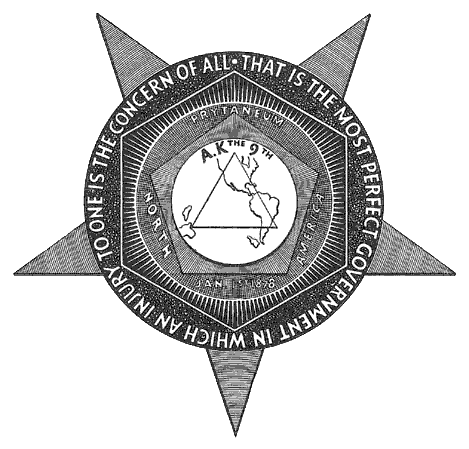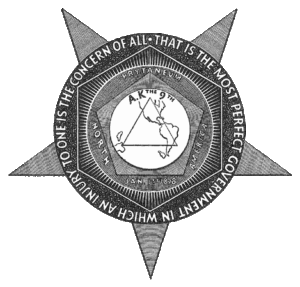This was a new one on me, an early American labor union that was modelled on Freemasonry – the Noble Order of the Knights of Labor, founded by Uriah Stephens in Philadelphia in 1862. Wikipedia etc is scant on details of the Masonic influence but I found an academic review of a book on the subject – Robert E. Weir. Beyond Labor’s Veil: The Culture of the Knights of Labor – that gives some details:
“The strength of Weir’s analysis is attention to the interface between dominant and oppositional cultures. He closely traces how the Knights borrowed from pre-existing and co-existing cultures, both working class and bourgeois, and adapted and transformed familiar rituals, songs, literary forms, parading traditions, and so on for the new purposes of “Labour Reform.” The deep debts to Victorian fraternalism, sentimentality, and evangelicalism, in particular , are clear. But so too is the Knights’ concern to use this culture to build the bonds of brotherhood (and sisterhood) among all toilers. Abandoned or repelled by many churches, working-class religiosity found a home in local assemblies where religious faith infused much of the Order’s ideology and inspired much of its music and poetry-notably its most popular song, “Storm the Fort.” This was the “liberation theology” of the nineteenth century, though largely detached from institutional churches. Victorian melodrama and sentimental poetry were recast to broadcast labour themes (incidentally, Weir underestimates the public role of poetry recitations were extremely common in public gatherings of all kinds). Regalia was designed to allow the Order’s membership to proudly display their commitment and solidarity, particularly on the grand occasions of public parading and picnics to celebrate workers’ dignity and social worth-the first Labor Days in North America were sponsored by local branches of the Order. Weir identifies a turning point in 1882, when the Order officially ended the era of secrecy that had existed since its founding in 1869, and when its culture shifted from the orally transmitted rituals of fraternalism to a more public, literary culture of solidarity. Although this new expansiveness and openness brought in many more members, including women and people of colour, he identifies some inherent problems in this new phase. The Order’s greatest cultural cement, its ritual, went into decline over the 1880s, while the Knights’ other cultural forms proliferated, became more diffuse, and fell prey to the commercializing tendencies of the period…”
Read further: https://muse.jhu.edu/article/681081/pdf.


